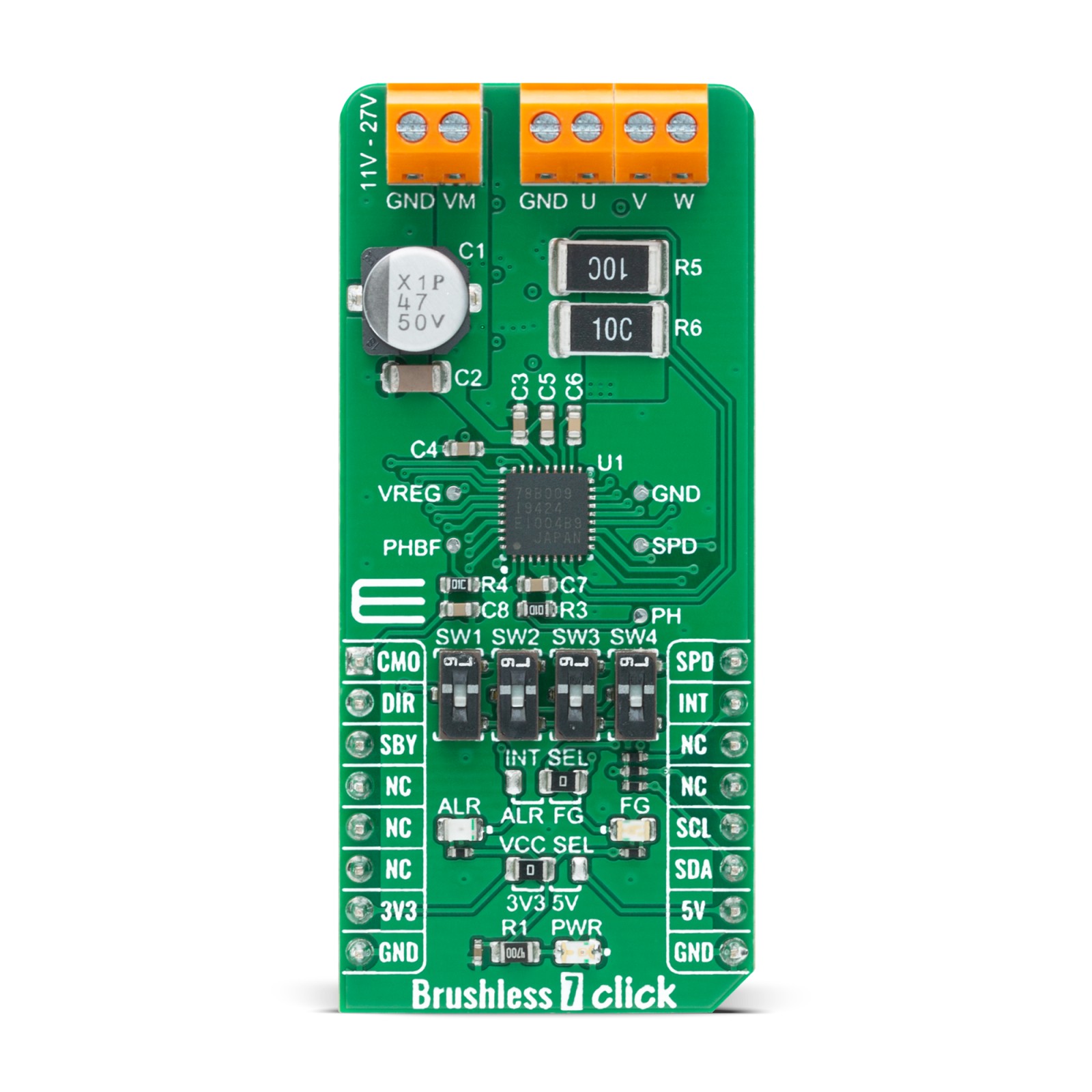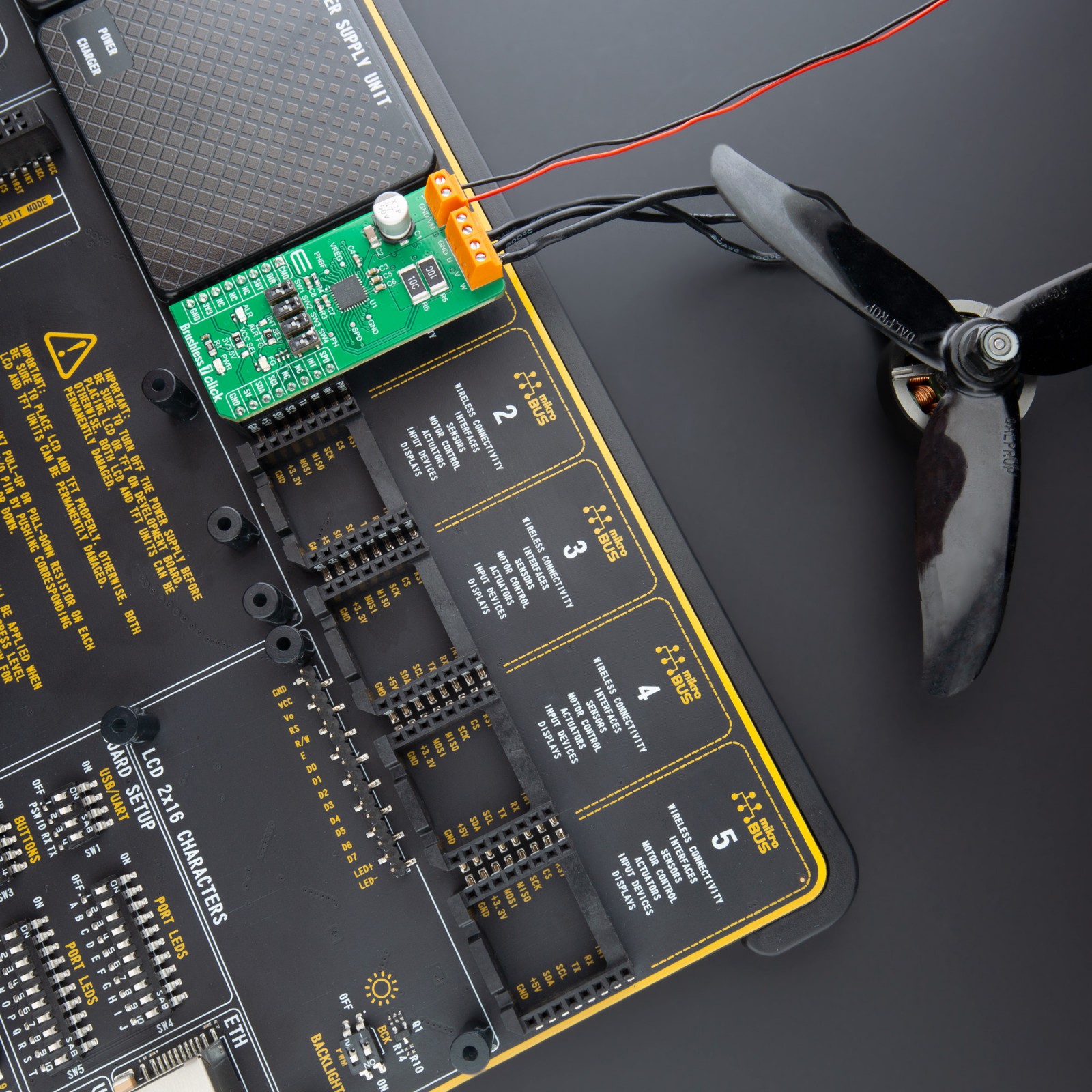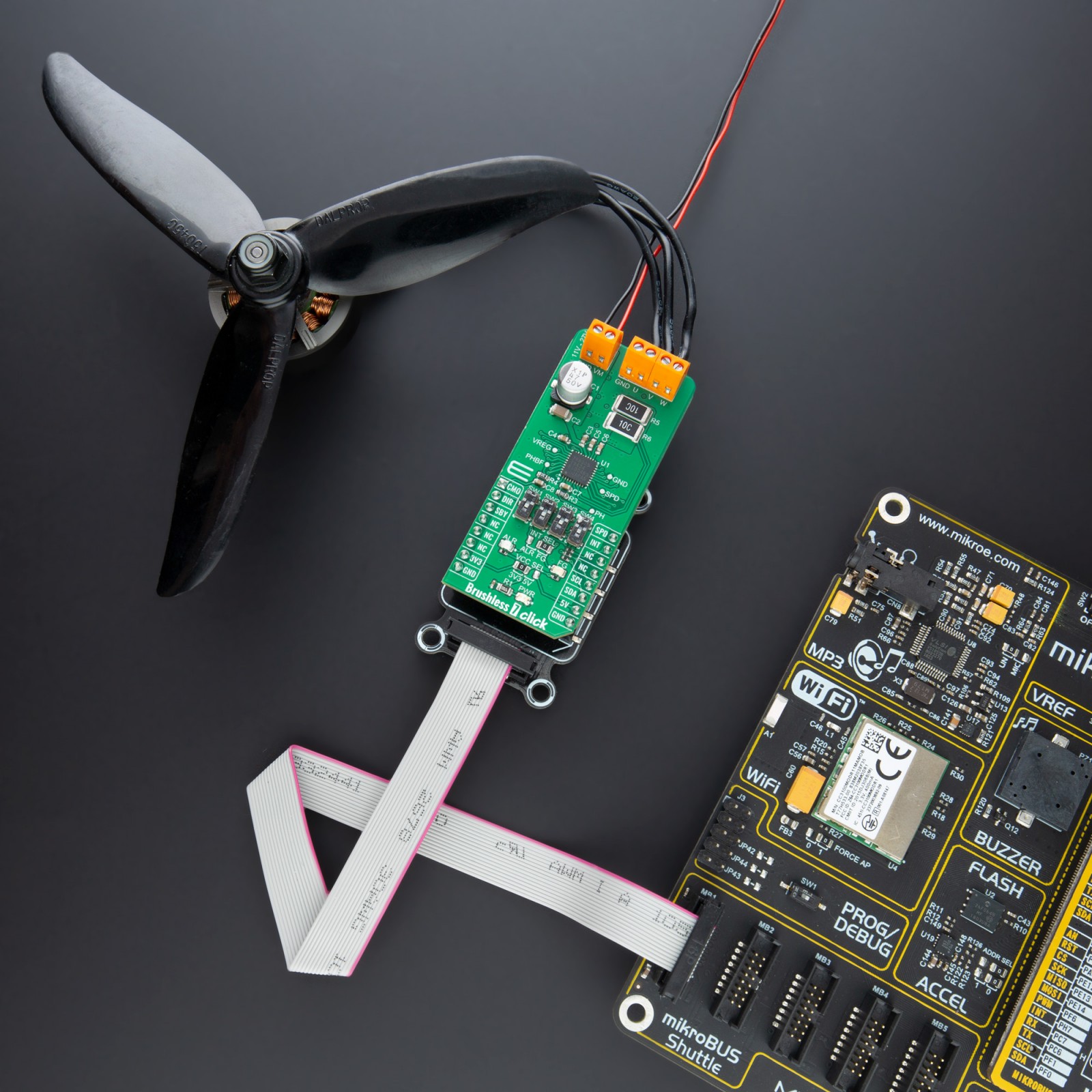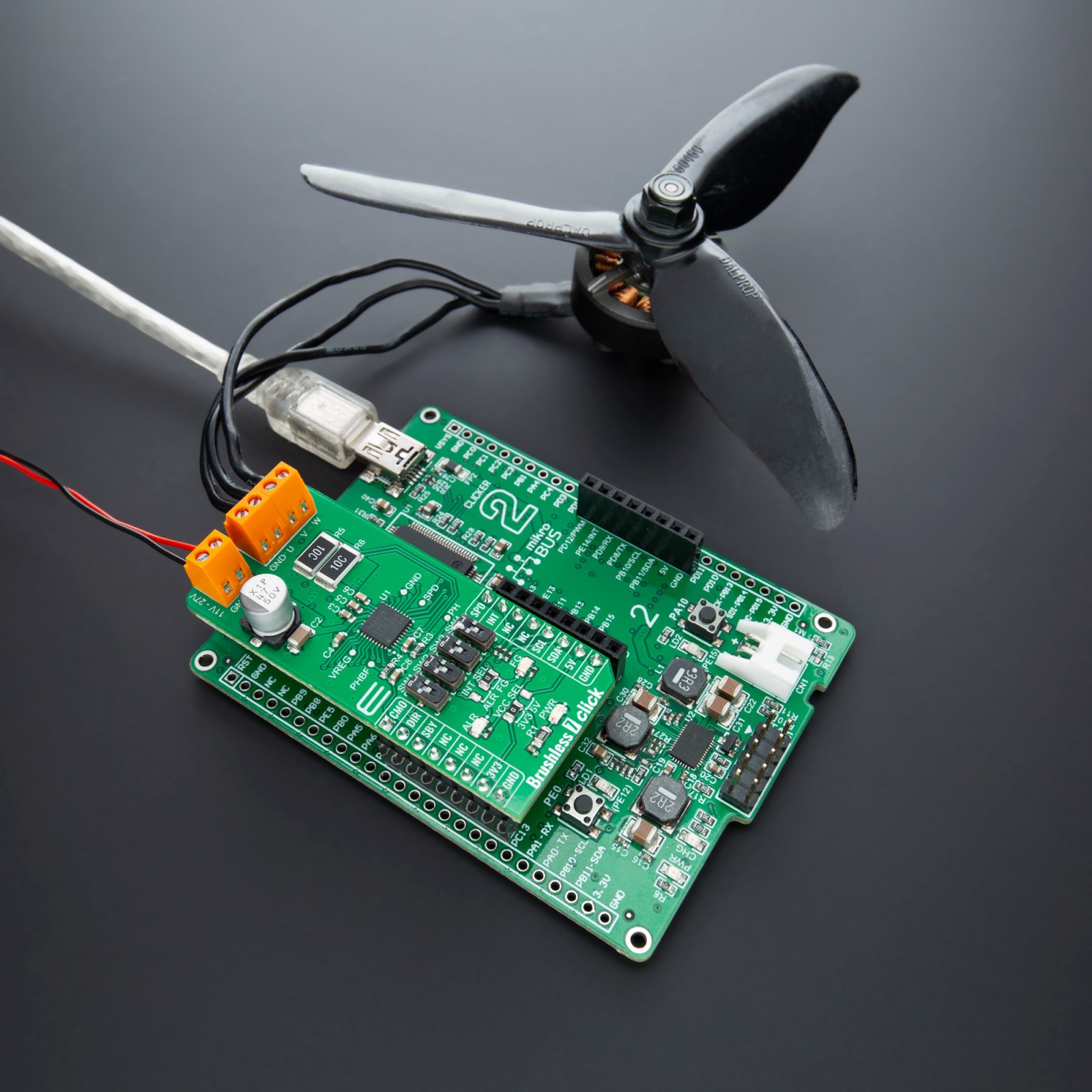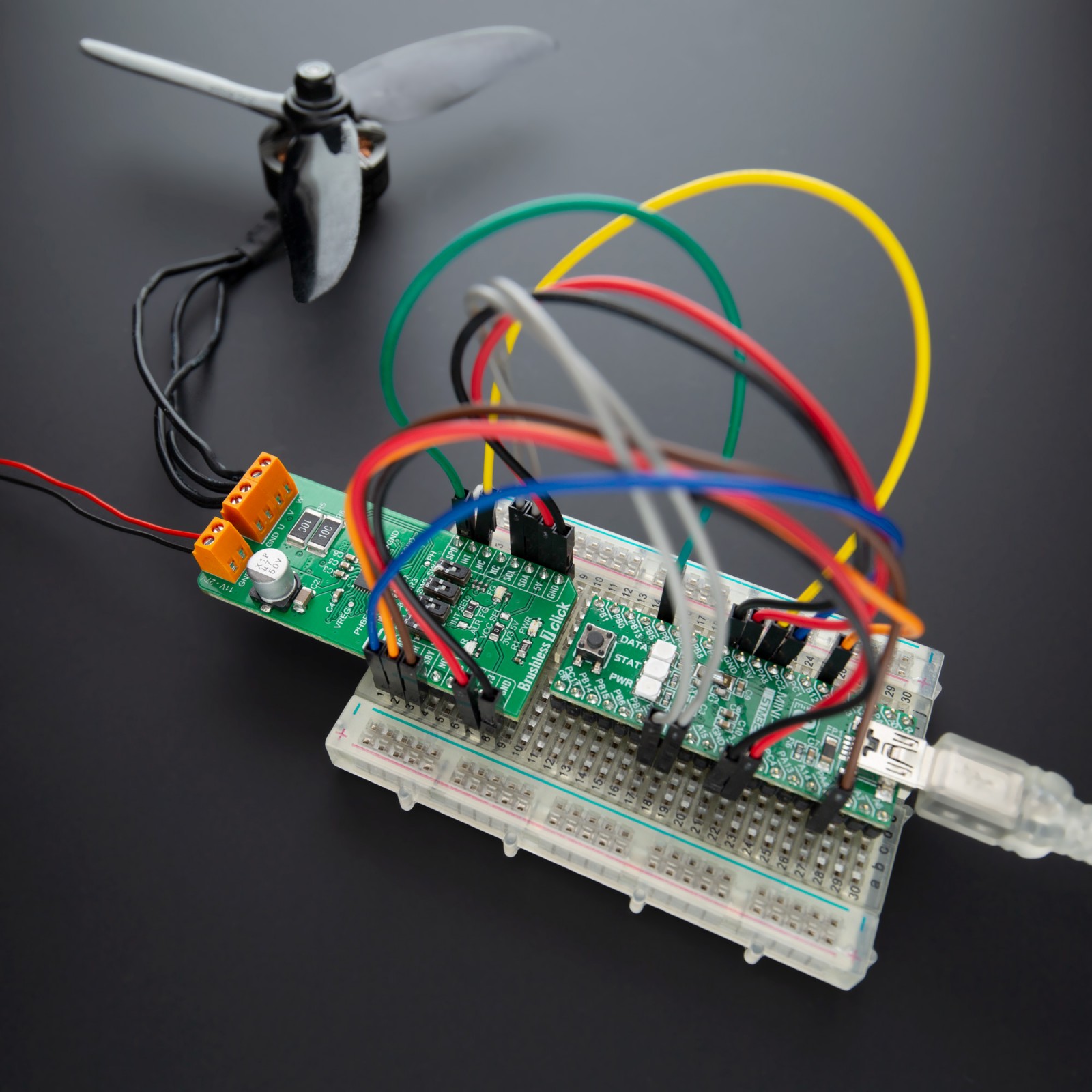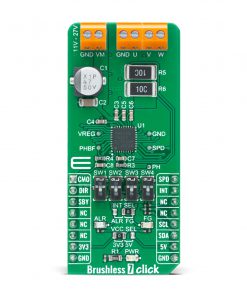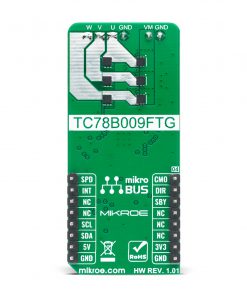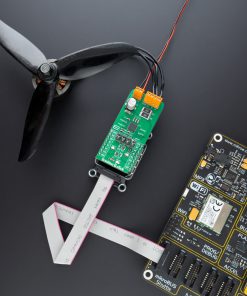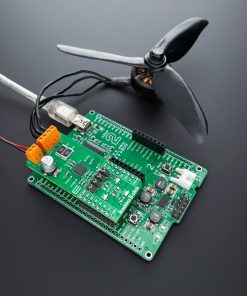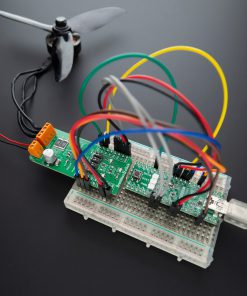Brushless 7 Click is a compact add-on board suitable for controlling BLDC motors with any MCU. This board features the TC78B009FTG, a three-phase PWM pre-driver realized with six external MOSFETs to drive sensorless brushless motors from Toshiba Semiconductor. Some of the main features are a built-in closed-loop speed control function with internal non-volatile memory (NVM) for speed profile setting and the ability to set other features such as rotation direction selection, brake, Standby mode, and others. It also has a wide operating voltage range of 11V to 27V with an output current capacity of 5A and several built-in error detection circuits. This Click board™ provides optimum operational efficiency in applications such as high-velocity server fans, blowers, and pumps.
Brushless 7 Click is supported by a mikroSDK compliant library, which includes functions that simplify software development. This Click board™ comes as a fully tested product, ready to be used on a system equipped with the mikroBUS™ socket.
 GSM-GPS Click
1 × R1,300.00
GSM-GPS Click
1 × R1,300.00  GPS Click
1 × R1,050.00
GPS Click
1 × R1,050.00  EXPAND Click
1 × R260.00
EXPAND Click
1 × R260.00  DIGI POT Click
1 × R370.00
DIGI POT Click
1 × R370.00  tRF Click
1 × R1,050.00
tRF Click
1 × R1,050.00 
